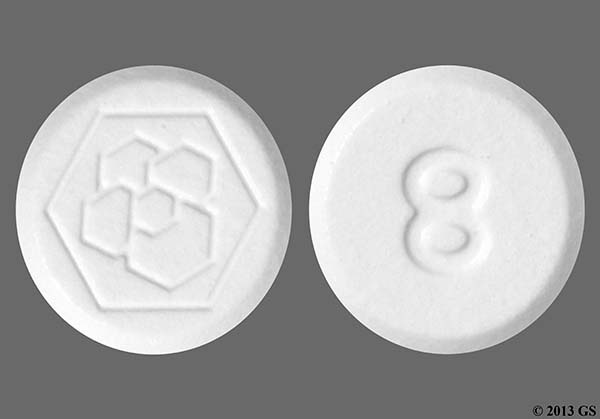Iloperidone | Fanapt
FANAPT is an atypical antipsychotic agent indicated for the acute treatment of schizophrenia in adults (1). In choosing among treatments, prescribers should consider the ability of FANAPT to prolong the QT interval and the use of other drugs first. Prescribers should also consider the need to titrate FANAPT slowly to avoid orthostatic hypotension, which may lead to delayed effectiveness compared to some other drugs that do not require similar titration.
The recommended target dosage of FANAPT tablets is 12 to 24 mg/day administered twice daily. This target dosage range is achieved by daily dosage adjustments, alerting patients to symptoms of orthostatic hypotension, starting at a dose of 1 mg twice daily, then moving to 2 mg, 4 mg, 6 mg, 8 mg, 10 mg, and 12 mg twice daily on days 2, 3, 4, 5, 6, and 7 respectively, to reach the 12 mg/day to 24 mg/day dose range. FANAPT can be administered without regard to meals. (2.1)

—–INDICATIONS AND USAGE—–
- See description above.
—–DOSAGE AND ADMINISTRATION—–
- See description above.
—–CONTRAINDICATIONS—–
- Known hypersensitivity to FANAPT or to any components in the formulation. (4)
—–WARNINGS—–
- Elderly patients with dementia-related psychosis who are treated with atypical antipsychotic drugs are at an increased risk of death and cerebrovascular-related adverse events, including stroke. (5.1)
- QT prolongation: Prolongs QT interval and may be associated with arrhythmia and sudden death—consider using other antipsychotics first. Avoid use of FANAPT in combination with other drugs that are known to prolong QTc; use caution and consider dose modification when prescribing FANAPT with other drugs that inhibit FANAPT metabolism. Monitor serum potassium and magnesium in patients at risk for electrolyte disturbances (1, 5.2, 7.1, 7.3, 12.3)
- Neuroleptic Malignant Syndrome: Manage with immediate discontinuation of drug and close monitoring. (5.3)
- Tardive dyskinesia: Discontinue if clinically appropriate. (5.4)
- Hyperglycemia and diabetes mellitus: Monitor glucose regularly in patients at risk for diabetes. (5.5)
- Seizures: Use cautiously in patients with a history of seizures or with conditions that lower seizure threshold. (5.7)
- Orthostatic hypotension: Dizziness, tachycardia, and syncope can occur with standing. (5.8)
- Leukopenia, Neutropenia, and Agranulocytosis have been reported with antipsychotics. Patients with a pre-existing low white blood cell count (WBC) or a history of leukopenia/neutropenia should have their complete blood count (CBC) monitored frequently during the first few months of therapy and should discontinue FANAPT at the first sign of a decline in WBC in the absence of other causative factors. (5.9)
- Suicide: Close supervision of high risk patients. (5.13) • Priapism: Cases have been reported in association with FANAPT treatment. (5.14)
- Potential for cognitive and motor impairment: Use caution when operating machinery. (5.15) • See Full Prescribing Information for additional WARNINGS and PREACUTIONS.
—–ADVERSE REACTIONS—–
- Commonly observed adverse reactions (incidence ≥5% and two-fold greater than placebo) were: dizziness, dry mouth, fatigue, nasal congestion, orthostatic hypotension, somnolence, tachycardia, and weight increased. (6.1)
—–DRUG INTERACTIONS—–
- The dose of FANAPT should be reduced in patients co-administered a strong CYP2D6 or CYP3A4 inhibitor. (2.2, 7.1)
—–USE IN SPECIFIC POPULATIONS—–
- Pregnancy: No human or animal data. Use only if clearly needed. (8.1)
- Nursing Mothers: Should not breast feed. (8.3)
- Pediatric Use: Safety and effectiveness not established in children and adolescents. (8.4)
- Hepatic Impairment: Not recommended for patients with hepatic impairment. (8.7)

